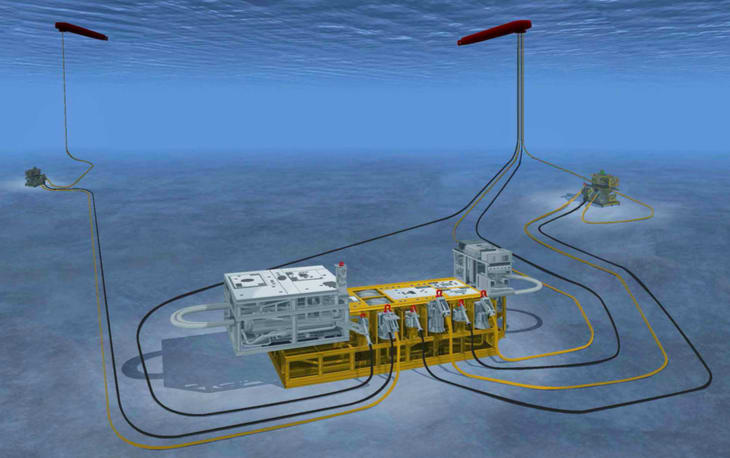Yokogawa Subsea Control System
Yokogawa's Subsea Master Control Station (MCS) standardizes subsea control systems, allowing for more efficient project execution and reduced engineering costs and time.
Learn About our Master Control Systems
Our subsea solutions provide an Integrated DCS/MCS Control System for both topsides and subsea, which offers a single window into the offshore platform from remotely anywhere that your DCS system can be accessed. The Subsea Master Control Station utilizes modular programming for more effective engineering and testing as well as a better streamlined change management process. The Subsea MCS features a modular unit design that brings more onshore capabilities to companies when it comes to testing, replicating and making changes to subsea wells.
Key Features of Subsea Master Control Station (MCS)
 |
|
Customer Challenge
Making Subsea Development More Efficient
|
 |
Our Subsea Well Control System Solutions
Shifting to a Modular Unit Design
Yokogawa Subsea Master Control Station provides a standardized application library (Toolkit) for control and monitoring of subsea operation across all the subsea projects, considerably reducing time and cost typically associated with engineering, maintaining, testing, and replicating subsea wells.
- Integrated solution for topsides and subsea controls: A conventional, standalone MCS is replaced with a fully Integrated Control and Safety System (ICSS) featuring a Modular Unit Design that allows all changes for both topsides and subsea to occur from a single interface. The Yokogawa MCS solution has standardized HMI and Alarm Management that aligns with industry best practices.
- One unit procedure for multiple wells: In the modular design, a single generic code applies for all wells; once a modification is completed for one well, the change can be applied to all wells, saving time and effort while maintaining quality. The same applies to testing procedures; once programming is tested for one well, it can be easily proven for others.
- More efficient management of system: With no expertise on multiple systems needed and only one system to upgrade, well modi cation only requires a generic change, reducing facility downtime and increasing productivity. Remote system access also makes it possible for all changes and troubleshooting to be accomplished onshore for a more efficient maintenance process.
Customer Benefits
High Quality & Reduced Time, Costs and Engineering Efforts
Yokogawa’s advanced solutions for subsea production give customers an advantage. The modular programming concept of our Subsea Master Control Station simplifies the processes of moving, renaming and testing subsea wells, all of which could take up to a number of weeks without integrated topside and subsea systems.
Switching to a modular subsea system like the Master Control Station comes with benefits that include:
- Easier configuration and maintenance through one master database
- Remote system access
- Generic programming
- Simpler maintenance and management of corrections and changes
- Easier troubleshooting
Downloads
Brochures
- Subsea Master Control Station (831 KB)
Videos
Discovered more than a decade ago, the Jack and St. Malo fields are expected to deliver more than 500 million barrels of oil. The Jack St. Malo floating production unit is the fourth deepwater facility Chevron operates and is the largest Chevron has in the Gulf of Mexico. Hear what it takes to deploy the technology and deliver first oil from this very challenging megaproject
Looking for more information on our people, technology and solutions?
Contact Us
